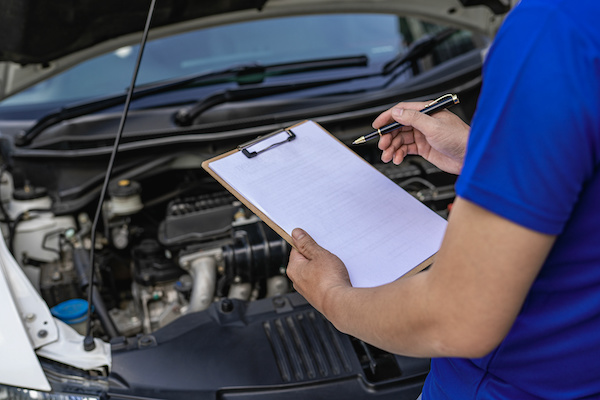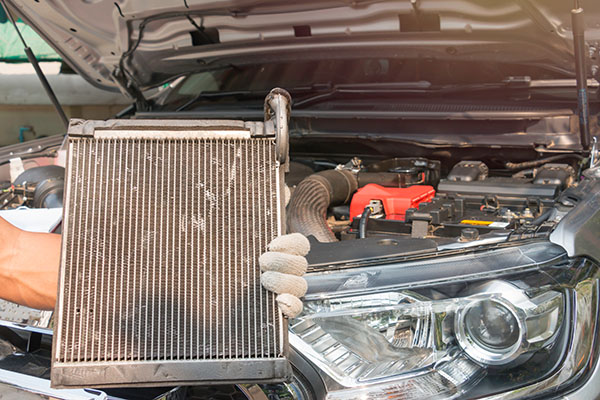Posted on 9/30/2023

Car owners often wonder if tune-ups are necessary, given advancements in automotive technology. In today's modern vehicles, the phrase "tune-up" might seem like a relic from the past, conjuring images of adjusting carburetors and tweaking spark plugs. However, the truth is a bit more nuanced. Tune-ups in contemporary automobiles focus less on the traditional tasks and more on regular maintenance services. These services ensure that your vehicle continues to run efficiently, saving you money in the long run. Spark Plugs: One of the key components checked during a tune-up is the spark plugs. They play a crucial role in igniting the air-fuel mixture in your engine. Over time, spark plugs can become fouled, leading to decreased fuel efficiency and engine performance. Replacing them can enhance your car's combustion efficiency. Air Filters: A clean air filter is essential for the health of your engine. A clogged air filter can reduce airflow, leading to decreased power ... read more
Posted on 8/31/2023

When it comes to maintaining your Nissan Rogue, a little knowledge goes a long way. Your trusty companion on daily commutes and weekend getaways deserves the best care to ensure it performs optimally and stays reliable for years to come. 1. The Routine Check-up Just like regular doctor visits keep you healthy, routine maintenance ensures your Nissan Rogue's health too. Begin with oil changes, air filter replacements, and tire rotations. Nissan recommends an oil change every 3,000 to 5,000 miles, depending on driving conditions. This simple step will keep your engine purring and extend its lifespan. 2. Smooth Sailing Transmissions The transmission is your Rogue's gearbox, and it deserves special attention. Regular fluid checks and changes can prevent costly repairs down the line. If you notice jerky shifts or delays, consult a professional mechanic to avoid further complications. 3. Brakes – Your Safety Net Bra ... read more
Posted on 7/30/2023

Car repairs are a part of every vehicle owner's journey. While some repairs are routine and straightforward, there are certain procedures that car owners dread due to their complexity, cost, or inconvenience. Today, we will talk about what they are, and how to avoid them. Engine Overhaul An engine overhaul is perhaps one of the most dreaded car repair procedures. It involves disassembling the entire engine, inspecting and repairing or replacing worn-out components, and then reassembling it. This procedure can be time-consuming, labor-intensive, and expensive, often requiring specialized tools and expertise. Sometimes, heavy machinery is used to mill out components which are even more of a headache. How Can I Avoid This? Prioritize regular maintenance and adhere to the recommended service intervals. Routine oil changes, proper cooling system maintenance, and timely repairs for any engine-related issues can help prolong the engine's lifespan a ... read more
Posted on 6/30/2023

Power windows have become a standard feature in modern vehicles, offering convenience and ease of use. However, like any other component, power windows can experience issues that render them non-functional. Understanding the potential causes of power window failures can help you diagnose and address the problem efficiently. We'll explore three common culprits behind power window failures, and how to fix them right up! Faulty Window Regulator One of the most common reasons for power window failure is a faulty window regulator. The window regulator is responsible for controlling the up-and-down movement of the window glass. Over time, the regulator's internal components can wear out, leading to issues such as the window getting stuck or not moving at all. Signs of a faulty window regulator include unusual noises during operation or a window that moves slowly or intermittently. The faulty window regulator will likely need to be replaced in order to fix this. It ... read more
Posted on 5/31/2023

The cooling system in your vehicle plays a crucial role in maintaining the optimal temperature of your engine, preventing overheating, and ensuring efficient performance. Understanding how the cooling system works can help you recognize the importance of regular maintenance and troubleshooting potential issues. In this blog post, we will go into the key components and how they function, to make it easier to understand. Radiator At the heart of the cooling system lies the radiator, a heat exchanger designed to dissipate heat from the engine coolant. The radiator consists of a series of small tubes that run through a grid of fins. As the hot coolant flows through these tubes, the fins transfer heat to the surrounding air, cooling the fluid. Coolant The coolant, often a mixture of water and antifreeze, plays a vital role in the cooling process. It circulates through the engine in a closed loop, absorbing heat generated by the combustion process. The c ... read more